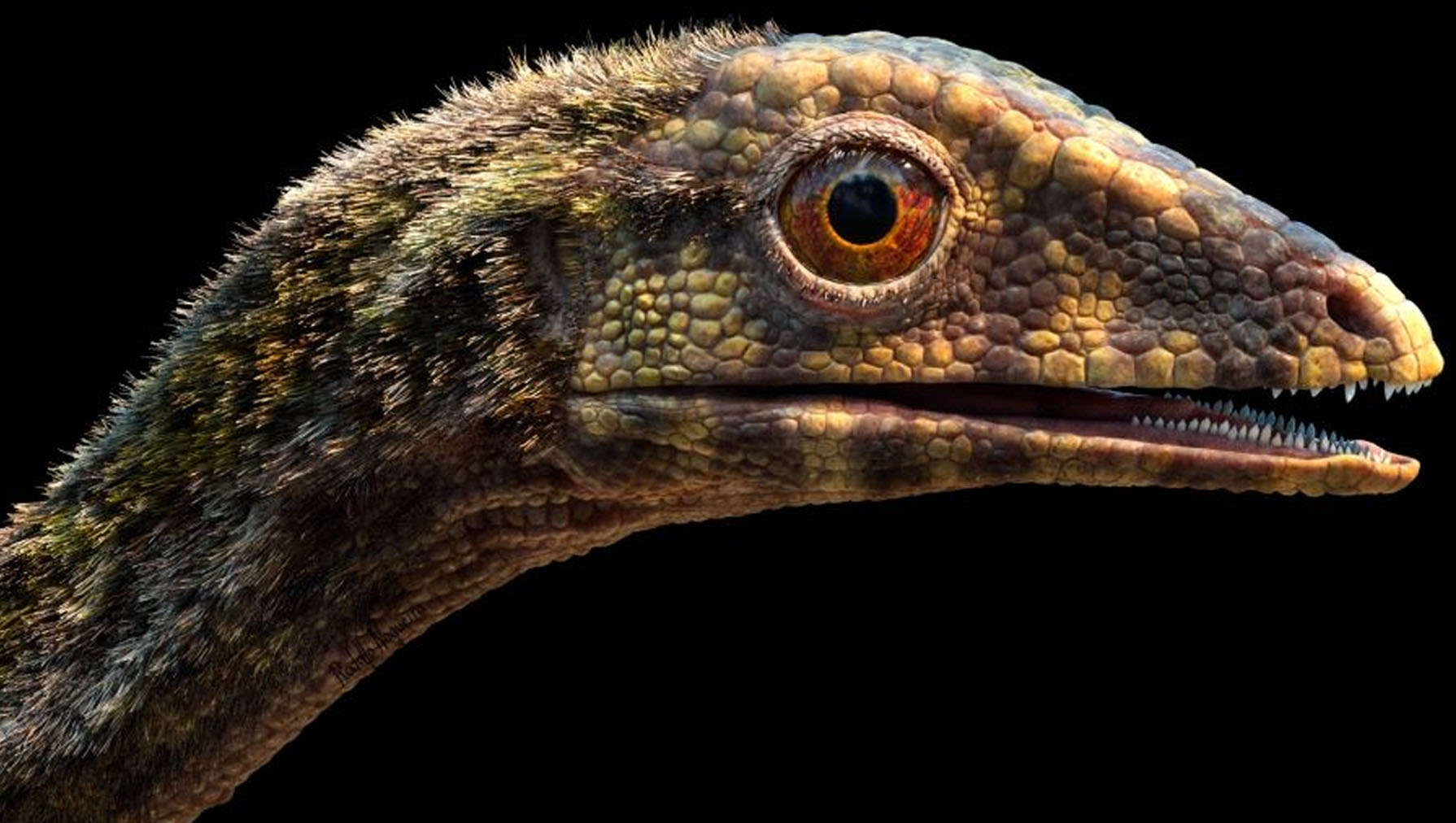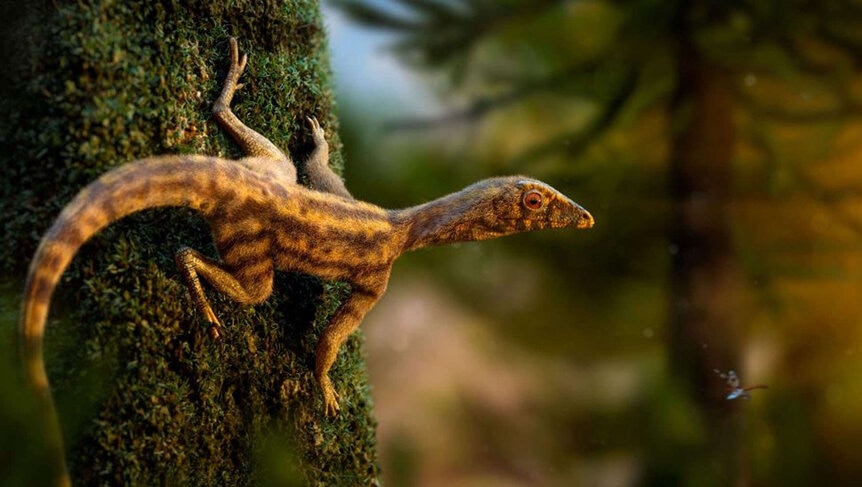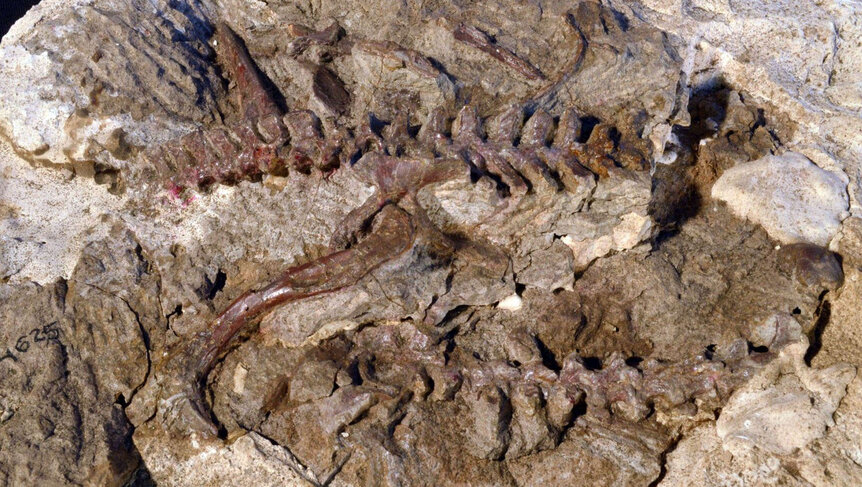Create a free profile to get unlimited access to exclusive videos, sweepstakes, and more!
Strange fuzzy lizards are solving the prehistoric mystery of how pterosaurs flew onto the scene

Pterosaurs were majestic and terrifying creatures. It’s almost impossible to think these flying predators, some with wingspans up to 40 feet, could have been related to a humble lizard without wings.
Lagerpetids were weird, fuzzy, flightless Triassic reptiles that never took off from land. They would probably be the last thing anyone would expect to show up on the pterosaur family tree. Unexpectedly, they have now been found to be the closest known relatives of pterosaurs. This finally gives scientists an idea what a flightless pterosaur relative would have looked like. Despite the obvious lack of wings, lagerpetids still had hidden morphological characteristics — such as inner ear structures — that were the same things which helped pterosaurs take off.
Pterosaurs were the first vertebrates that ever flew. While lagerpetids did not evolve into pterosaurs, no one can deny the family resemblance when it comes down to fossils.
“Lagerpetids were on our planet for tens of millions of years, and we are just discovering that they are critical to understanding the origin of powered flight in reptiles,” Virginia Tech researcher Sterling Nesbitt, who coauthored a study recently published in Nature, told SYFY WIRE. “They were a unique group of reptiles (just like primates are a unique group of mammals), so they did not turn into pterosaurs. But, the common ancestor of lagerpetids and pterosaurs did look much more like a lagerpetid than a pterosaur.”
Though their bones were once thought to be closer to those of dinosaurs than pterosaurs, another look at the skulls and forelimbs from lagerpetids has revealed the opposite. Many vertebrates that are still crawling around in some form today, from turtles to frogs and even mammals, emerged during the Triassic period. Pterosaurs also appeared at the dawn of the Triassic. Whether the common ancestor they shared with lagerpetids had wings or proto-wings (or none at all), they were previously thought to have evolved into flying machines rapidly because their bodies were so unlike anything else that existed at the time.
Pterosaurs are believed to have evolved at the same rate as any other life-form now that they have been found to be so closely related to lagerpetids. Their closest relatives were thought to be reptiles related to dinosaurs, but the vast differences between their bones still left a morphological mystery. Something that could have more specifically explained their bone structure was missing. If you factor out the wings, lagerpetids and pterosaurs share a surprising amount of characteristics, to the point that scientists, including Nesbitt, are baffled as to why lagerpetids remained flightless.
“The neuroanatomical features that lagerpetids and pterosaurs share are correlated to visual acuity and generally being agile; characteristics that are highly beneficial for flying vertebrates,” he said.
Because the lagerpetid remains Nesbitt and his team studied were preserved so well, they were able to make out anatomical similarities to pterosaurs through the entire skeleton. These are believed to be the first signs of how pterosaurs evolved, though they did not evolve directly from lagerpetids. The skulls and forelimbs were already appeared eerily close to those of pterosaurs. Using micro-CT scanning technology, the researchers were able to image the skull in extremely thin, hi-res slices that they used to see what the brain and inner ear looked like, which showed more parallels to pterosaur anatomy. Lagerpetids had the same structures in their inner ears that allowed pterosaurs to figure out and stabilize their positions in the sky.
While this research does fill a gap in what is known about the evolution of pterosaur anatomy and the ability to fly, unknowns remain, especially the reason why lagerpetids never evolved flight when they were supposedly descended from the same ancestor as pterosaurs. They are, however, distantly related to birds.
“Lagerpetids and pterosaurs are distant cousins of dinosaurs and birds are highly modified dinosaurs. Birds and pterosaurs gained their flying ability separately given that their common ancestor did not fly,” said Nesbitt.
Next time you see a bird flying overhead, just think about that.




























